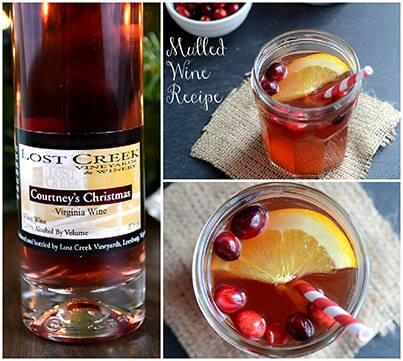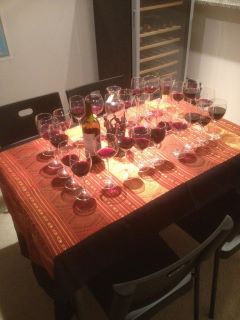At my holiday/birthday party each year the first thing I put on the stove is a warmer full of wine and spices. It's always gone in the first two hours. So, this year I am going to try three new recipes with local wine.
Here are 10 Northern Vrginia wineries serving mulled wine during the chily months so you can take a few bottles for a test drive before they hit the crock pot:
The Barns at Hamilton Station Vineyards, Hamilton – Mulled wine available on Saturdays for $7/glass
Sunset Hills Vineyard, Purcellville -- Serving a blend of Cabernet Franc, cinnamon, cloves, nutmeg, orange, lemon and sugar to warm up your holiday spirit. Mulling spice packets are also available for purchase.
Quattro Goomba’s Winery, Aldie - Enjoy mulled wine in the tasting room, or purchase spices on site to make it at home.
 The Vineyards & Winery at Lost Creek, Leesburg - Grab a glass by the fireplace.
The Vineyards & Winery at Lost Creek, Leesburg - Grab a glass by the fireplace.
Loudoun Valley Vineyards, Waterford - Traditional-style gluhwein available starting in December.
North Gate Vineyards, Purcellville - Pair a glass with truffles from Maryland chocolate from Perfect Truffles.
Corcoran Vineyards, Waterford– Mulled wine available every Saturday.
Hunter’s Run Wine Barn, Hamilton – Mulled wine made with Chambourcin or Merlot.
Hidden Brook Winery, Leesburg – Mulled wine make with apple cider and wine available on site, and mulling spice -- made in Gaithersburg, Md., -- are available to bring home.
Hiddencroft Vineyards, Lovettsville- "Grandma's Love Potion" (blueberry wine with 2% residual sugar and 12% alcohol) is mulled and spiced with cinnamon, cloves, allspice and lemon or orange peel. Northern VA Magazine has details from last winter's brew.
